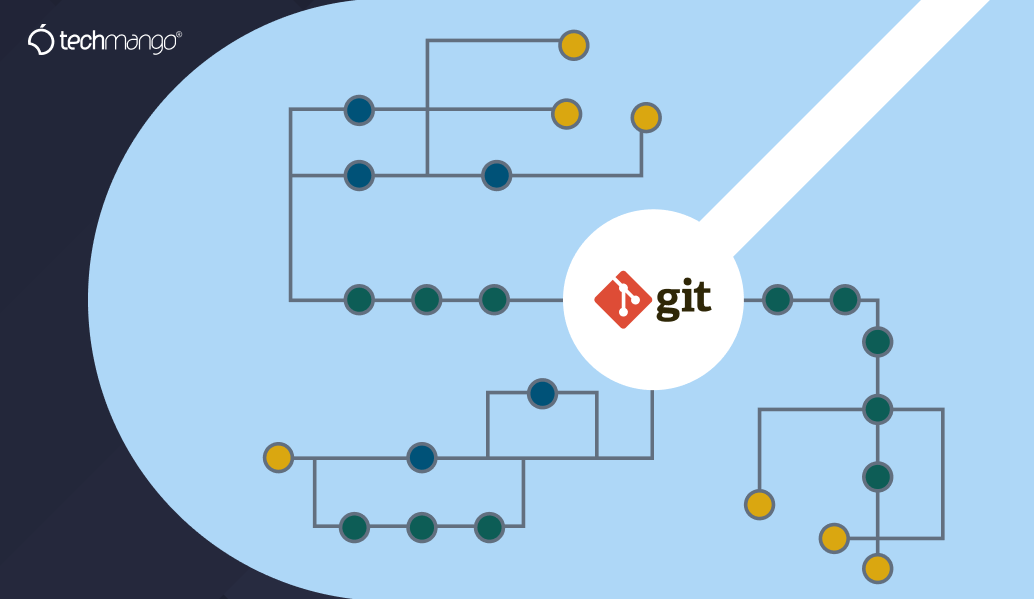Currently, on the market, Git is the most widely used version control and source code management solution. It has revolutionized the way we looked at version control with its distributed repository structure that helps developers detach and work on their local repo and attach back to push changes to the remote repo. Git retains the same version control in the local repository as it does in the remote repository since the local repository is simply a copy of the distant repository.
What is a branching strategy?
Branching strategies are important to everyone who is working as a team in an organization. There have been multiple branching strategies developed by the open-source community to help developers manage their work in a better way, with almost all of them being tried and tested by pro developers from the industry. Let’s dive into the pros and cons of each one.
A branching strategy is a strategy that software developers use to leave the source branch untouched but works on a new branch that is created from the source branch, once the coding is complete, the new branch is merged with the source branch and deployed the code. Its followed widely when a codebase is shared between a team of developers
Why do you need a branching strategy?
A branching strategy essentially helps developers to code and track their code in an organized way. When there is a parallel development, many features will be merged into one branch to be released.
Git branching
Git branches allow developers to split from the source branch by creating new branches from the source and isolating code base changes. The default branch in Git is the master/main branch.
Four Main Git Branching Strategies
| Strategy | Overview |
| GitFlow | GitFlow works with mainly two main branches, master and development across the project. Developers can also create some temporary branches such as branches: feature-*, hotfix-*, and release-*. It’s the most complex model. |
| GitHub Flow | GitHub Flow is a simple model of GitFlow which suits a smaller team structure/ Projects, as they don’t need to manage multiple versions. Every temporary branch must be fully tested before being merged with the source branch. |
| GitLab Flow | GitLab Flow strategy is like an extension of GitHub Flow with master and feature branches. Also, it has an environment and release-based branches to better support SaaS and mobile projects. |
| Trunk-Based Development | Trunk-based development is a branching strategy that requires no branches but instead, developers need to integrate their changes into a shared trunk branch every day. This trunk is shared and should be ready to release anytime. |
Comparing Version Control Strategies
| # | GitFlow | GitHub Flow | GitLab Flow | Trunk-Based Development |
| Types of Company | Large Scale | Startups | All | Startups |
| Work Complexity | High | Low | Variable | Low |
| Branch Overhead | Complex | Simple | Simple | Simple |
| Difficulty in Merging | Hard | Easy | Easy | Easy |
| Deployment Support | Releases | Continuous | Both | Continuous |
| Team Size | Large | Average | Average | Small |
How to Choose the Best Git Branching Strategy?
The best Git branching strategy depends on the type of project, team size, and experience of your team. To have a simpler model, one can choose GitHub Flow or Trunk-based development may work best.
Projects requiring Continuous Releases for more than one environment should follow the GitLab Flow. Continuous Releases apply to SaaS-type projects.
To conclude, there is no such thing as the perfect strategy. Choose your best strategy based on your project and team.
How Does Branching Strategy Relate to DevOps?
DevOps wants to know how to pull and merge requests are handled, and the amount of overhead involved in managing the branches. DevOps is a practice that engineers can use to automate the process of building and deploying applications. This automation relies on continual testing and iterative deployments. The branching strategy improves this process by allowing developers to deploy their code without disrupting other team members when they are working on different branches.
Branching is a common tool used by developers in the course of their work. This means that DevOps understands how to work with branching and merging, while also having an answer to how to deal with the basics of branching strategy. The best way to do this is by stepping back and looking at the big picture, instead of focusing on small details.
